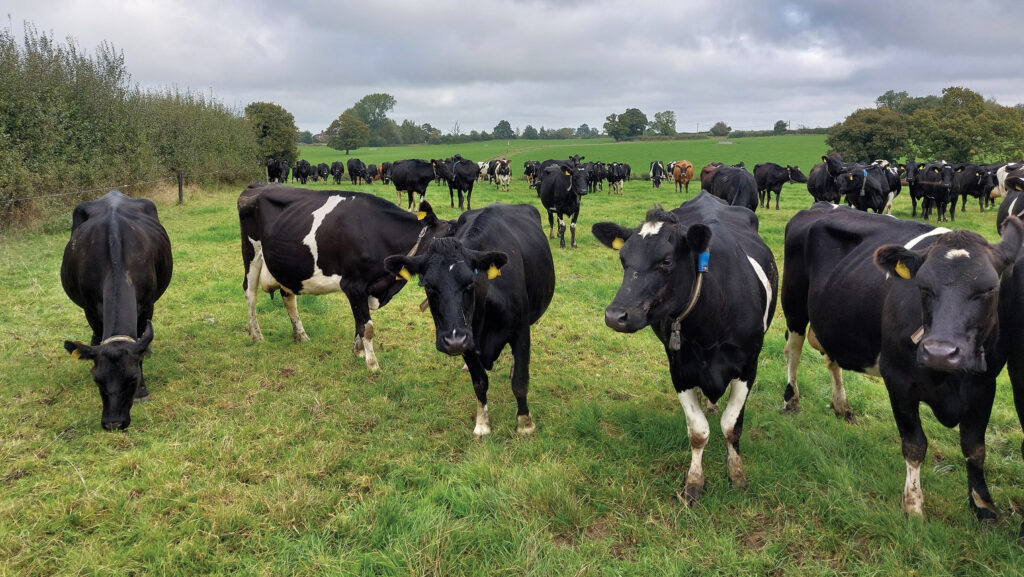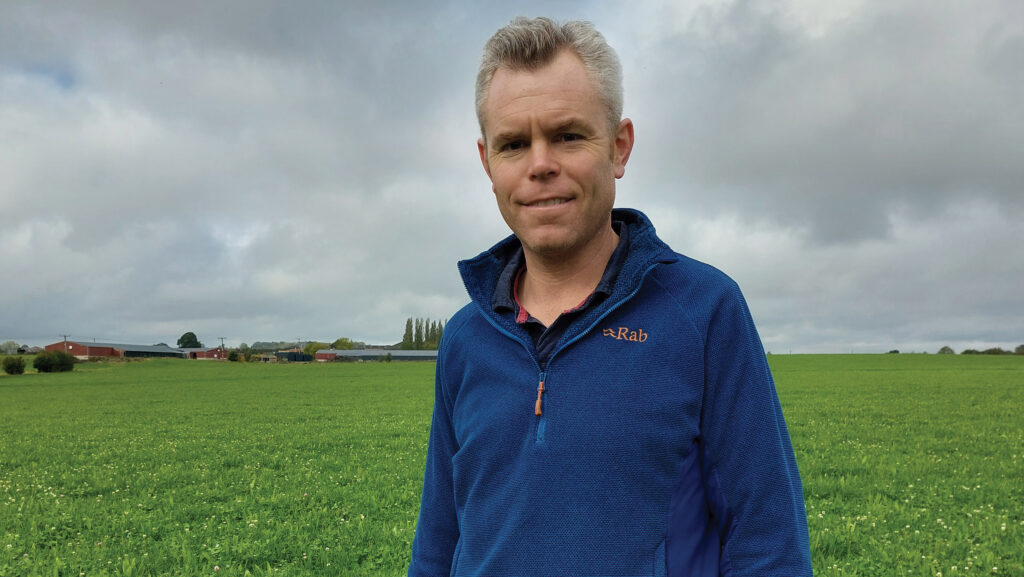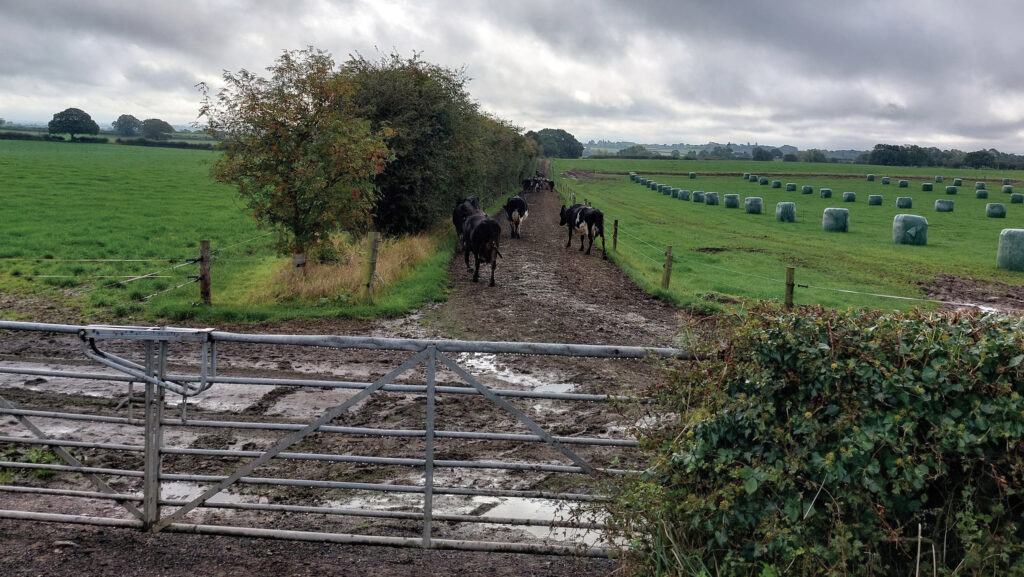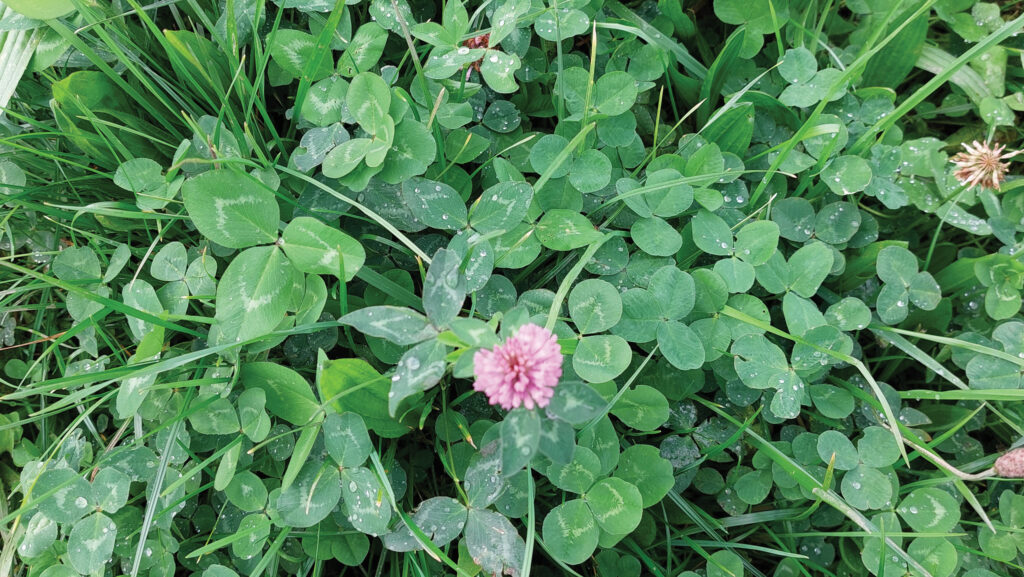How one dairy farm is hitting the stocking rate sweet spot
 © MAG/Shirley Macmillan
© MAG/Shirley Macmillan The “sweet spot” for a Staffordshire dairy farm is a stocking rate of 2.2 cows a hectare, allowing a spring block-calving herd to become self-sufficient in forage, while maintaining milk yield.
The sweet spot for a business is neither a comfort zone, nor maximum output.
Rather, it reflects a business that has progressed to work comfortably within a farm’s resources and capabilities to optimise performance.
What is the business “sweet spot” for a dairy farm?
Farm facts: Castle Hayes Park Farm, Staffordshire
- Total 404ha farmed
- All grassland including herbal and clover leys
- Calving from 14 February for 11 weeks
- Seven full-time staff, plus three seasonal calf rearers
- Target is 325,000kg of milk solids from 650 cows, fed 600kg concentrates a cow
Rupert Major, who farms 404ha (998 acres) at Castle Hayes Park, near Tutbury, thinks his farm has “probably” reached its sweet spot.
He has spent the past 15-plus years progressing the business and streamlining enterprises to focus on milk production from grazed grass, together with an off-farm business.
Priority has also been given to achieving a work-life balance with time for family and hobbies.
Rupert thinks the business is now robust, profitable and sustainable. Lowering input costs and reducing exposure to risk have made profitable performance repeatable, he says.
Maintaining and fine-tuning a simple system with few inputs and following the same pattern each year makes it robust.

Rupert Major © MAG/Shirley Macmillan
Investment in infrastructure
“Profit, for me, is a level where I can afford to reinvest in the farm and to take money out of the business to live.
“If we are self-sufficient in feed and have low exposure to things outside my control – such as fertiliser and cereal prices – then we can cope with fluctuating milk prices,” he explains.
“Outwintering 60-70% of cows helped us get where we are: making money to build infrastructure.
“In 2015, we put up a 250-cow cubicle shed and extended the herringbone to a 40:40, then reduced outwintering to 15% of cows.
“We also moved away from outwintering on forage crops such as fodder beet to deferred grass and silage bales to keep it simple, with no diet changes.”

© MAG/Shirley Macmillan
He is mindful that progressing a business can lead to “tinkering” and straying from core principles.
Having tried to maximise output from every acre, Rupert says he made a 650-cow enterprise work by stocking at 2.6 cows a hectare on a milking platform of 250ha (618 acres).
However, the farm was short of land for heifers, and low rainfall (700mm) caused a 20% fluctuation in annual grass yield – the average is 13.7t dry matter/ha.
As all paddocks are grazed and silage is only made from surplus grass, Rupert became good at buying in forage to plug feed gaps.
He purchased entire clamps of silage and used a haulier to move 1,500t over a couple of days for re-clamping at Castle Hayes.
In addition, he was buying 750-1,000t of brewer’s grains a year.

© MAG/Shirley Macmillan
Ideal stocking rate
His final business change came in September 2023, when he had the opportunity to rent 90ha (222 acres) on the farm across the road.
He says this was “a big piece in the jigsaw puzzle” because it helped him reach the ideal stocking rate for Castle Hayes.
The additional land created a grazing platform for youngstock (and potentially dry cows in future).

© MAG/Shirley Macmillan
This let him increase the milking platform at home from 250ha (618 acres) to 290ha (717 acres) and pull back on stocking rate from 2.6 to 2.2 cows a hectare (see table).
By operating under this moderate stocking rate, Rupert says he can increase the proportion of grazed grass in the diet – and for longer.
The sweet spot for him, therefore, is being able to grow the food required by the dairy herd and followers – with a goal of being 90% or more self-sufficient in feed.
And he is no longer at risk of being exposed to highly priced or poor-quality forage.
Herd performance 2023-24 |
||
|
|
2023 |
2024 |
|
Cow numbers |
626 |
597* |
|
Replacements 0-1 year |
170 |
153 |
|
Replacements 1-2 year |
161 |
168 |
|
Litres a cow |
5,622 |
5,737 |
|
Milk solids a cow (kg) |
480 |
483 |
|
Milk solids a hectare |
960 |
714 |
|
Total farmed area (ha) |
313 |
404 |
|
Milking area (ha) |
250 |
290 |
|
Stocking rate (livestock units/ha) |
2.6 |
1.9 |
|
Concentrate use (kg a cow) |
740 |
800-900 |
|
Grass silage fed (tonnes of dry matter a cow a year |
1.3 |
2 |
|
Other feed (kg of dry matter a cow a year) |
172 |
0 |
|
*Some Johne’s culls; herd numbers building back up to 650 cows. Source: Castle Hayes Park Farm |
||
Grazing platform
The new land is of a good soil type and had been well-managed, but it was in an arable rotation.
A plan of establishing pasture, fencing and water infrastructure was needed, and it was steered by Rupert’s experience as a Sustainable Farming Incentive pilot.
(Heifers will be outwintered on grass and bales as there are no sheds in the rental agreement.)
He decided to reseed the new platform with two-fifths herbal leys; one-fifth Italian ryegrass and Westerwolds; and two-fifths grass and clover leys.
He says the aim is to benefit from fixed nitrogen and further improvements in soil structure, as well as better water retention during dry periods.
Another advantage is that youngstock will be grazing herbal leys from their first year: “We are future proofing ourselves,” he adds.
In his first operating year on this grazing platform, Rupert has been able to drop artificial nitrogen applications to 90kg/ha, saving £90/ha in fertiliser.

Clover is supplying nitrogen © MAG/Shirley Macmillan
He feels confident that he will no longer have to buy forage, having built up sufficient silage stocks to have surplus to carry forward.
“It probably has hit the sweet spot. In year one of an arable conversion, we have grown the same as an established dairy farm.
“We have also benefited from that first year’s amazing growth you get from a reseed. Clover will start to contribute in year two, so I hope we can maintain performance from then on,” he says.
“Then we can transition all the farm to high-clover leys and make nitrogen more of a supplement, rather than a standard input.
“Our plan will be to spread monthly during February, March and April to a total of 90kg N/ha across all hectares by 1 May. This will stimulate early spring grass growth and get a good first cut.
“For the rest of the growing season, nutrients will be supplied by legumes; I’m achieving environmental impact, growing forage, but also maintaining output.”
Rupert is aware that while legumes and herbs offer more flexible grazing, he will be altering the shape of his grass growth curve, and this will require adaptable management.
He is also looking at the persistence of legumes in his system and how this affects reseeding policy.
In future, he thinks it possible cow concentrate use can be reduced to 500-700kg a cow a year, without losing milk yield.
Consolidation
Over the next five years, Rupert aims to consolidate what he has achieved so far, keep it under review, then says it is a case of “repeat, repeat, and improve”.
This fourth-generation tenant has his sights on the next 30 years.
He hopes that by setting up a stable and long-term performing dairy farm, it will prove attractive – and offer further potential – to the next generation.
Rupert knows that if he pushed the farm, he could milk 750 cows, but he says there would be constraints on housing, slurry, parlour, bulk tank and calf rearing.
Instead, he wants to maintain the sweet spot: “Long term, we can keep growing grass and our soil improves every year. I’ve got an excellent team of people to take care of my animals.
“We have bred good cows and genetically improve them every year, which reduces our culls, so that is sustainable.”
